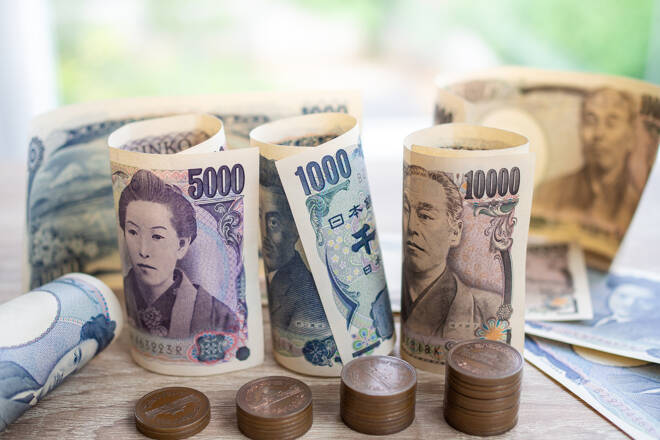Advertisement
Advertisement
Japanese Yen and Australian Dollar News: Will LEI Revision Boost BoJ Rate Hike Bets?
By:
Key Points:
- Japan’s LEI dip to 108.6 sparks USD/JPY volatility, with BoJ rate hike bets hinging on a potential upward revision.
- PBoC rate decisions could drive AUD/USD trends; a stimulus boost may push the pair to $0.63623 resistance.
- Fed chatter on delaying rate cuts may bolster USD/JPY to 160, signaling potential intervention risks.
Japan’s Leading Economic Index: Boom or Bust?
On Wednesday, December 25, Japan’s Leading Economic Index (LEI) could affect the USD/JPY pair and sentiment toward the Bank of Japan’s rate path. According to the preliminary report, the LEI dipped from 108.9 in September to 108.6 in October.
An upward revision above 110 could raise investor bets on a Q1 2025 BoJ rate hike. The LEI reflects business and consumer sentiment trends, leading indicators for wage growth and household spending. Improving business sentiment could drive investment and job creation, potentially supporting wage growth.
Upward trends in consumer sentiment could fuel household spending and demand-driven inflation. These are crucial prerequisites for the BoJ to hike interest rates.
Conversely, a downward revision below the August low of 106.9 could lower expectations for a Q1 2025 BoJ rate hike.
Upbeat data may pull the USD/JPY pair below the 156.884 support level, potentially bringing the 50-day EMA into play. However, a larger-than-expected drop may drive the pair toward 160 and the 161.920 resistance level.
The BoJ’s October monetary policy meeting minutes revealed plans to gradually raise interest rates to 1% in the second half of the 2025 fiscal year if the economy and prices developed as expected.
Meanwhile, BoJ Governor Kazuo Ueda said the Bank needed more wage growth data before considering a rate hike. The BoJ’s forward guidance underscores the likely influence of economic data on BoJ rate hike bets and Japanese Yen demand.
Other stats include finalized Coincident Index data, a sub-component of the LEI. However, this will likely play second fiddle to the LEI numbers.
Expert Views on the Bank of Japan Rate Path
Robin Brooks, Senior Fellow at the Brookings Institution, remarked on US policies and the BoJ rate path, stating,
“Japanese interest rates keep drifting higher, as the BoJ seeks to normalize policy. This is a dangerous game. If the US puts large additional tariffs on China, that’s a big negative shock that will also hit Japan. Better for the BoJ to stay on hold instead of sneaky tightening…”
Brooks highlighted the risks of US-China trade tensions and their potential to disrupt global demand. While these uncertainties could leave the BoJ in a policy-holding pattern, the Bank may also have to deal with the economic implications of a weakening Yen. A depreciating Yen raises import prices and living costs, increasing inflation and straining household spending.
USD/JPY Trends: Fed Chatter in Focus
Turning to the US dollar appetite, investors should track FOMC member chatter over the holidays. Hawkish rhetoric supporting a higher-for-longer Fed rate path may push the USD/JPY pair to 160, a potential intervention zone. A return to 160 may enable the bulls to target the 161.920 resistance level.
Conversely, support for a January Fed rate cut could drag the USD/JPY below the 156.884 support level. This would then bring the 50-day EMA into sight.
AUD/USD: Can the PBoC Fuel Aussie Dollar Demand
Shifting to the Australian dollar, Chinese monetary policy remains pivotal to AUD/USD trends. Economists expect China’s Central Bank to maintain the 1-year Medium-Term Lending Facility Rate at 2.0%.
An unexpected rate cut could push the AUD/USD pair toward $0.63 and the $0.63623 resistance level. Conversely, a lack of PBoC stimulus may further pressure the pair, potentially bringing sub-$0.62 levels and the lower trend line into sight.
Borrowing costs in China could influence demand. Accounting for one-third of Aussie exports, China’s demand trends could affect the Aussie economy as it has a trade-to-GDP ratio above 50%.
Trade terms may also impact employment and wage growth, potentially influencing the timeline for an RBA rate cut. 20% of Australia’s workforce is in trade-related jobs.
In December’s press conference, RBA Governor Michele Bullock underscored the importance of China’s economy, saying,
“US moves against China could affect Aussie trade terms with China, potentially impacting the Aussie economy.”
For a comprehensive analysis of AUD/USD trends and trade data insights, visit our detailed reports here.
Australian Dollar Daily Chart
FOMC member commentary could also influence the US-Australia interest rate differential.
Support for a delay to Fed rate cuts could drive US dollar demand, potentially dragging the AUD/USD pair below $0.62. A drop below $0.62 would bring the lower trend line into sight.
Conversely, calls for a January Fed rate cut may push the pair toward $0.63 and the $0.63623 resistance level.
Global Market Trends: Key Takeaways for Traders
Central bank policies from the BoJ, Fed, and RBA highlight the significance of monitoring economic data and central bank rhetoric. Explore our reports on USD/JPY and AUD/USD trends here for comprehensive insights.
About the Author
Bob Masonauthor
With over 28 years of experience in the financial industry, Bob has worked with various global rating agencies and multinational banks. Currently he is covering currencies, commodities, alternative asset classes and global equities, focusing mostly on European and Asian markets.
Did you find this article useful?
Latest news and analysis
Advertisement
